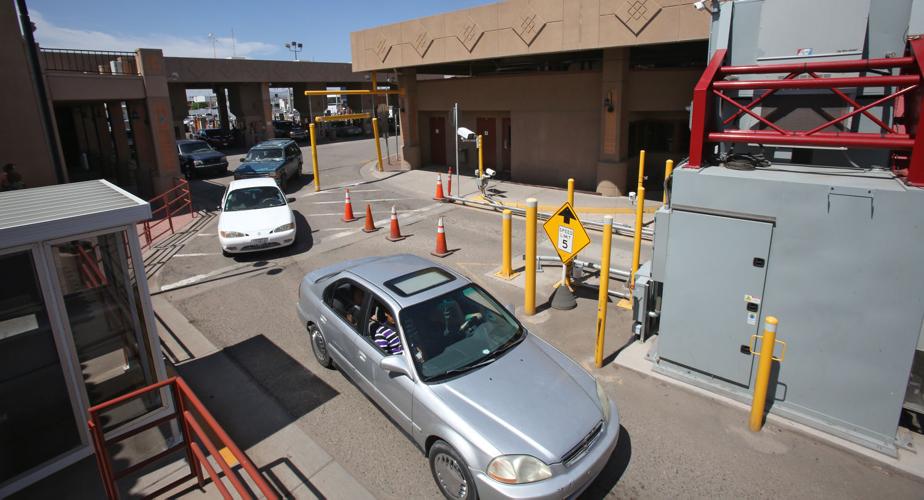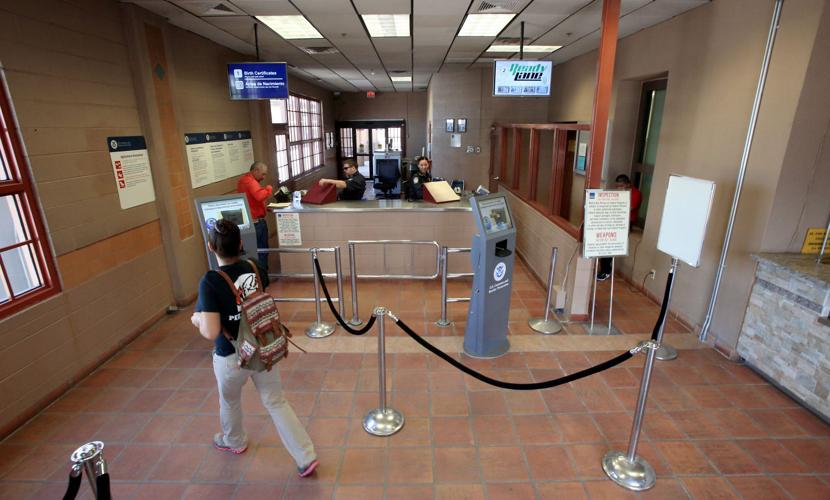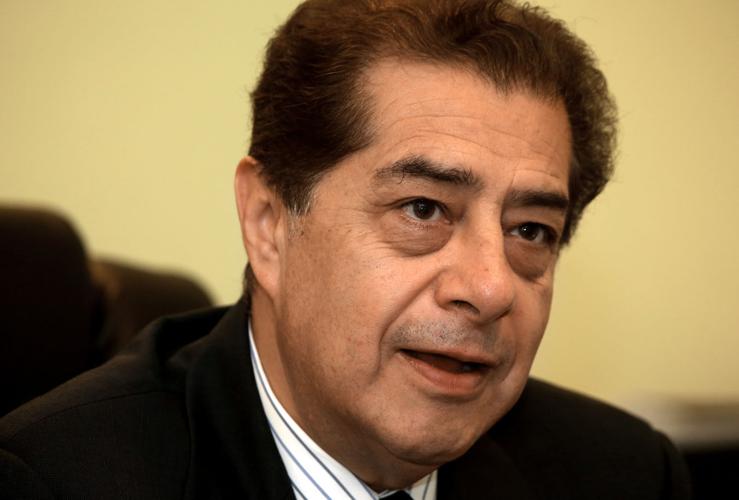DOUGLAS — The years-long effort to build a new commercial port of entry to help alleviate congestion and boost economic development hit another setback recently, but stakeholders here are not giving up.
Earlier this month, the city received a formal response from the federal government rejecting its proposal to donate up to 80 acres and build the infrastructure needed for a new port, said Mayor Danny Ortega Jr.
“We wanted to build it and lease it back to the government, then after a 20 or 30-year period, depending on the terms of the lease, they would get full ownership of the port,” he said.
Under the 559 Donation Acceptance Program, Customs and Border Protection and the General Services Administration are allowed to receive donations from private and government entities, but the city’s lease proposal does not fall within program guidelines.
“They wanted a full donation and at this time we don’t have the funds to do that,” Ortega said.
The city would have issued bonds to cover the cost of the project, about $47 million, which would have been paid through the lease agreement and possible tolls. Without a locked-in repayment source it is difficult to justify the risk to the city, officials said.
Over the last few years, city officials have tried to find alternate funding sources for a new port of entry after shrinking budgets and sequestration meant federal money might not come through soon enough, if at all.
Sitting back and doing nothing is not an option for Douglas, which depends heavily on its neighbors across the border in Agua Prieta and beyond, said City Manager Carlos de la Torre.
“Our primary livelihood for sustaining the city in revenue is dependent on the Mexican shopper,” de la Torre said. “Over 70 percent of our city sales tax revenue is directly attributed to the Mexican consumer. If that money stops, we feel it.”
Officials want to build a new port a few miles west of downtown and shift commercial truck crossings there. This would prepare Douglas to receive more commercial traffic and alleviate congestion at the current port, making it easier for shoppers.
Growing pains
Built in 1933 and last expanded in 1993, the Douglas Port of Entry sits on 4.8 acres. The surrounding area limits further expansion.
Port officials say they do their job with what they have, but on a typical Thursday morning it is clear that space is at a premium.
As the line of cars and trucks coming up to the port snakes for blocks into Mexico, pedestrians cut across traffic, and people wanting a permit or looking for travel information park in the same area where officers handle secondary inspections.
There is only one commercial truck lane, and oversize loads don’t fit through the main gate.
“The current situation is untenable and if you look at the cross-border traffic that we’ve seen it has been increasing and will continue to increase,” said Rep. Martha McSally. “The port is inadequate for facilitating current demands, let alone future demands.”
McSally pointed to a 2007 GSA report that found the port lacking for CBP mission requirements and a 2013 Arizona Department of Transportation study that indicates wait times will continue to rise and demand will outstrip capacity for commercial crossings.
Already, northbound commercial truck traffic has increased steadily, from 25,504 in 2010 to 33,104 in 2014. International trade with Mexico through the Douglas port grew from $1.4 billion to $2.2 billion during the same period, according to the Cochise College Center for Economic Research.
While Douglas is the most visible beneficiary of expanding trade, a new port would positively impact the entire region, said center director Robert Carreira.
“Wherever I go these days, whether I’m in Sierra Vista, Bisbee or Benson, I hear the same thing, there’s just so much untapped potential for trade with Mexico that we’re just not doing,” he said.
“When I look at the potential expansion of the port of entry, that’s really one of the biggest things going on in the whole county.”
Mexico is also interested in the creation of a new port, said Jorge Ernesto Espejel Montes, Mexican consul in Douglas, and is ready to go ahead with development on its end as soon as the United States begins construction.
The current port of entry, he said, does not only fall short of current needs, it is actually limiting growth by discouraging users not willing to face increasing wait times.
The deficient infrastructure is also a safety concern.
“Last week we had a chemical spill simulation, since you have various chemical substances used in mining that come across, and the result showed the facilities are inadequate to respond to this type of emergency,” Espejel Montes said.
The new port would move this cargo away from the population center, he said.
Looking for options
Even as officials wait for funds to build a new port, they have tried to facilitate travel as much as possible.
About two years ago, CBP opened a dedicated fast lane for travelers willing to pay an extra fee and go through background checks, which has helped with traffic port officials said.
And as southbound wait times grew with commercial trucks and passenger vehicles being funneled into the same two lanes, the city of Douglas and ADOT looked for ways to mitigate the situation, city manager de la Torre said.
Adding a lane between Third and Ninth streets to accommodate two way traffic, as well as a queueing lane on Third Street and Pan American Avenue, have helped reduce the bottleneck at the port.
But these are all short-term solutions, Mayor Ortega said, and they’re not giving up on getting a new port.
“We’re going to have a stakeholders meeting within the next month, sit down with CBP, GSA and local stakeholders and get guidance and brainstorm to see how we can get this thing moving forward,” he said.
Ortega is optimistic that Gov. Doug Ducey‘s focus on binational trade and improving the state’s relationship with Mexico will benefit the Douglas port project, as well as a new governor in Sonora.
McSally’s support
Although the denial of the city’s proposal was disappointing, Ortega said they will continue to look for ways to make a private-public partnership work, even as they hold out hope that the federal government comes through with the funding.
“We’re still not giving up on the political end, especially Congresswoman McSally has been very strong in supporting us on this,” he said. “We’ve visited Washington and been told many times it’s a good project, it’s a needed project; it’s just a matter of getting the right stars aligned.”
The obstacles to funding the port are frustrating, McSally said, especially because it is clearly a good use of resources.
“This is not a case of pork-barrel politics where we’re trying to build a bridge to nowhere,” she said. “This is a case of a much-needed infrastructure project that’s going to support economic development and security.”








